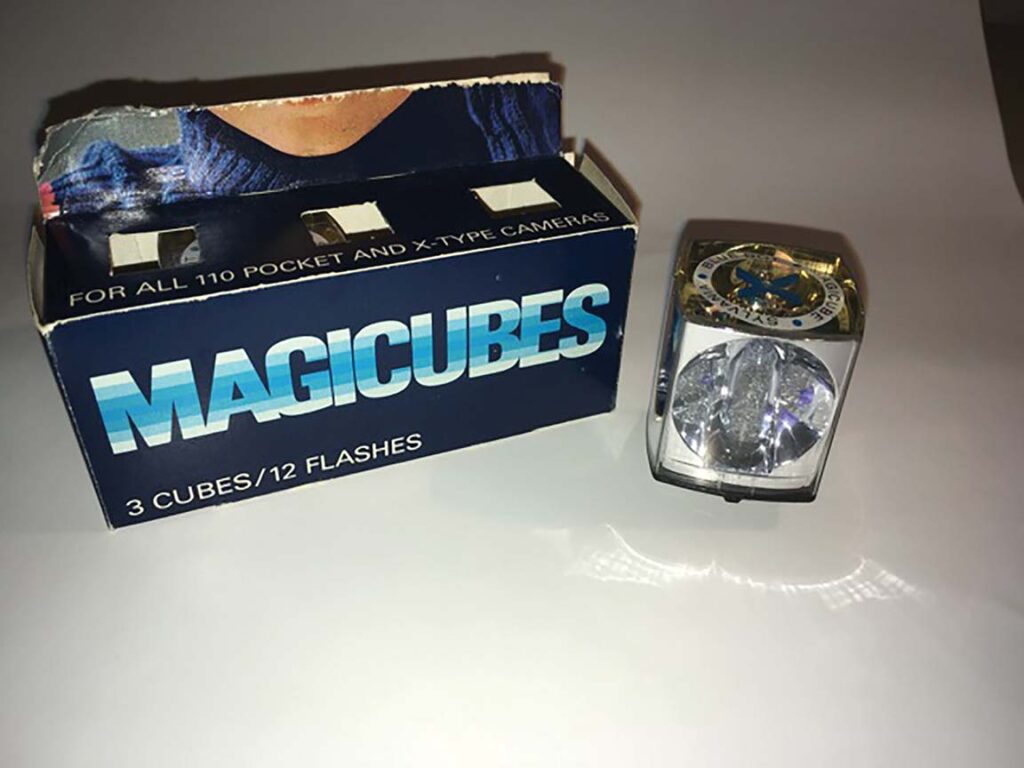
Dorri Partain
Contributor
The development of flash photography was, quite literally, explosive. In order to get the lumens necessary for indoor portraits, early photographers achieved a bright flash of light by setting off magnesium powder.
Flash photography was revolutionized by the development of the first flashbulb in 1929, which contained magnesium filaments inside a glass bulb. A brighter flash was achieved by changing from magnesium to zirconium filaments. Each bulb could be used once and had to be unscrewed from the flash attachment and replaced.
The industry was revolutionized again in 1965, when Eastman Kodak produced the first Instamatic camera, which used film cartridges and 4-flash rotating cube that was developed by Sylvania, a major manufacturer of vacuum tubes for radios and televisions, as well as lightbulbs. The flash cube used the same zirconium filaments, but up to four flash photos could be taken in rapid succession before a new cube had to be placed in the flash socket.
The only drawback was that the flash cube had to be powered by batteries, so if the camera’s batteries were dead, the flash would not go off and the photo would be dark when developed.
Sylvania later developed the Magicube, which would work without batteries, but was not interchangeable with the original flash cube. Magicube had a different socket than the flash cube so it would not fit the original Instamatic cameras.
For some consumers, this was quite confusing as flash cubes were still being produced and were sold right next to the Magicube in store displays- often they did not realize the difference and would purchase the wrong type of cube.
The Magicube was eventually replaced by the 10-count FlipFlash, developed and marketed by Sylvania also, but the introduction of cameras with built-in flash units led to the demise of both the flash cube and the Magicube.


















